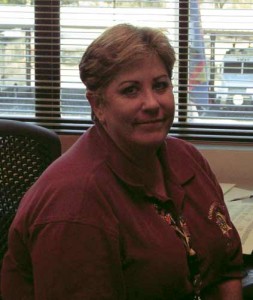Succession Management for the Comm Center Manager

Pat Joy, 9-1-1/dispatch manager for Pima County (Ariz.) Sheriff’s Department, is planning ahead for her retirement. She’s actively mentoring two senior supervisors, Tony Portrey and Katie Callan, to take over her responsibilities when the time comes.
If you are to pass on the mantle of leadership and ensure your comm center continues to move in a forward direction, you need to understand the concepts of succession management. That’s true whether the entity you work for is small or large; municipally or otherwise owned; or handles an urban, suburban or rural area. Traditionally, comm centers have had to focus on the here and now, sometimes thinking about the next issue or problem looming on the horizon, but almost never truly thinking five to 10 years down the road.
One of the elements crucial to changing this mindset and actually considering down-the-road issues is appropriate succession planning, sometimes referred to as succession or talent management.
Succession planning is defined by Wikipedia as “The process of identifying and preparing suitable employees through mentoring, training and job rotation to replace key players—such as the chief executive officer (CEO)—within an organization as their terms expire.”
Succession planning establishes a process that recruits employees, develops their skills and abilities, and prepares them for advancement, all while retaining them to ensure a return on the organization’s training investment. It involves:
- Understanding the organization’s long-term goals and objectives;
- Identifying the workforce’s developmental needs; and
- Determining workforce trends and predictions.
Similar to many aspects of comm center operations, there is no single best way to conduct succession planning. In fact, many individuals who have found themselves involved in succession planning have found it beneficial to use concepts from several organizations rather than relying on any single theory. The following provides an overview of some of the key aspects of succession planning you might consider.
How to Proceed
So how do you, as a comm center manager or administrator, change the traditional, reactionary mindset of your agency and develop a succession plan—that is, one that’s well thought out, rational and, eventually, complied with?
Before initiating the planning process, determine which key positions you feel require a succession plan. Note: This may be only one or two positions. Obviously, your own position is included in this, but you may also consider requiring your entire management team to create succession plans for their positions.
Be positive. Assure your team that the need for a succession plan is not because their current employment is at risk, but rather a way to ensure they are promotable if that option becomes available.
Consider potential successors in light of their abilities and their commitment to the mission and vision of your comm center. You don’t need to limit potential successors to those within your immediate organization or even those within the communications field. If the position is truly a management or leadership one, then the key element is the core skills. Anyone can be taught the communications business; it may just take a tad longer. In fact, there’s often great debate about whether it’s easier to take a telecommunicator and teach them management and leadership skills, or hire a person with great management and leadership skills and teach them the communications business.
After you identify a successor, or two, you need to let them know that you think they would be a good successor. It’s important that both parties understand each other; this way both of you can lay out some goals and expectations. Be sure you don’t indicate through the identification and development process that you’re guaranteeing a future promotion. Rather, you are creating options for the future.
Create an Action Plan
If the potential successor agrees to be part of the succession program, work together to develop a written action plan to prepare the successor appropriately. This may include, but is not necessarily limited to:
- Educational programs;
- Internships;
- Shadowing of key personnel at the workplace; and
- Any other developmental opportunity you both feel would be valuable.
This is the time to clearly delineate the actual work (both day to day and longer term) associated with your position.
When establishing this program, set reasonable time frames for completion that correlate with the goals as written, as well as a written expectations of how costs, logistics and other areas will be handled.
The last step in the planning process is to determine with the potential successor an estimated time frame to get ready for a transition, with specific dates for milestone completion. The overall development period may be six months or six years. The time period doesn’t matter as much as setting the actual goals. This way, the expectations are clearly understood on both sides.
Ceding Responsibility
An often overlooked but critical element is the ability for the person being succeeded to step aside—and this is a lot tougher than you may think.
After you and your comm center have determined that a succession plan is going to occur, the participants should remain true to the purpose of the process. Allowing the new management level personnel to make all levels of the entire spectrum of decisions (business, operational and administrative) while experiencing consequences, both positive and negative, is perhaps the most critical step in succession planning. Stepping aside in this manner can be challenging for managers; however, it’s paramount for success.
Conclusion
Sometimes the head of a comm center plans well in advance for a departure, leaving a lot of time for things to be handled appropriately, and sometimes fate has a way of not allowing for this much time. Planning in advance through the steps highlighted above may be one of the elements that keeps your comm center on track through otherwise bumpy times.
With effective, well-thought-out and followed-up-on succession planning, employees are ready for new leadership roles as the need arises. And when someone leaves, a current employee will be ready to step up to the plate.
About the Author
Raphael M. Barishansky, MPH, is the program chief for public health preparedness for the Prince George’s County (Md.) Health Department and a frequent contributor to various public safety publications. Contact him via e-mail at rbarishansky@gmail.com.
Originally published in APCO International’s Public Safety Communications, Vol. 77(8):50-51, August 2011.



